Sustainability does not mean just Polluting nature, having climate change, and having the industry people friendly. The number of Designs for sustainability ideas around cutting – squander has risen, from using scraps in interwoven clothing pieces to reusing them into new yarns. Most of the part of the apparel rest ends up in the waste canister and the landfill site. According To statistics uncover that right around three-fourths of material items end up in the landfill in the wake of being utilized; this is the example rehashed in many nations. The point was offered to ascend to a bunch of the exercises in style in some cases inexactly depicted as reusing, for example, reuse of the articles of clothing, changing of thing from an old piece of clothing pieces, and reusing the crude materials. The Japanese Boro technique is one example of working Sustainability. The term boro portrays the elements that have been fixed, pieced, or patched. The typical style began out of the need in the nineteenth and mid-twentieth hundreds of years. The piece of clothing which are utilized over and over improved from the ages, building spans through creativity and discovering excellence in endurance.
Various individuals from various urban areas have diverse language, sex, sexual orientation, distinctive speculation, and different opinions. On the off chance that these individuals are assembled and kept in one room/area and examine on one subject, every single individual will have their own opinion and have an alternate reaction to one point. Also animated by the Japanese boro technique, keeping this idea tested various strategies, such as traditional Indian weaving, smocking, reuse of denim, weaving, tie, dye, and burning of organza trying it. After exploring different avenues regarding various methods, all the bit of texture was mixed as it has been done in boro. Furthermore, after patching all the surfaces, all together, it was overdyed in indigo vat dye. To see the reaction of every single fabric. To see which texture responds to color and how. Some piece of cloth gets hues; some did not; cotton texture got contracted. So, as the various individuals have other sentiment and diverse responses to the subject. Similarly, the distinctive touch mixed to have a different reaction to color.
DIFFERENT TECHNIQUES USED
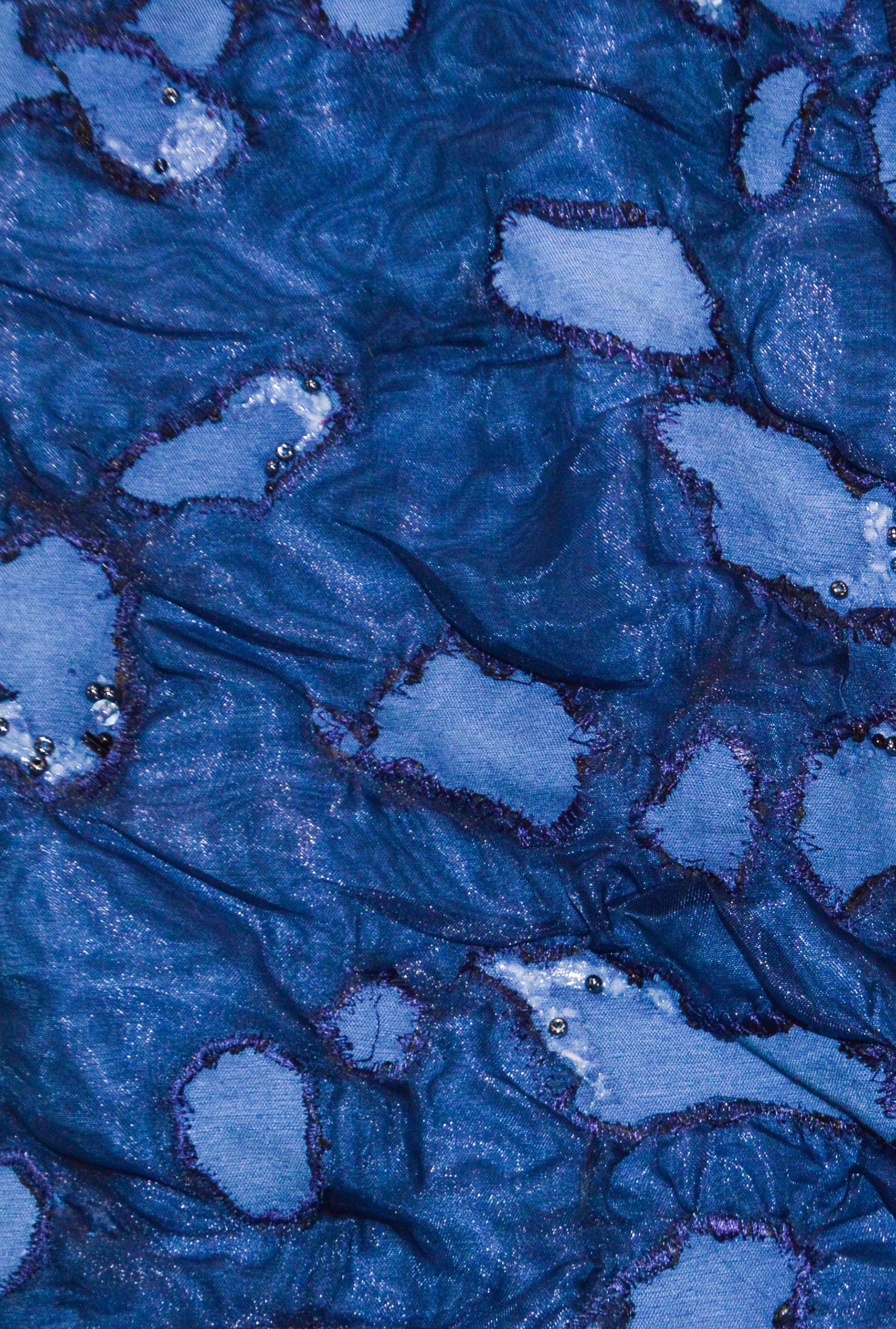
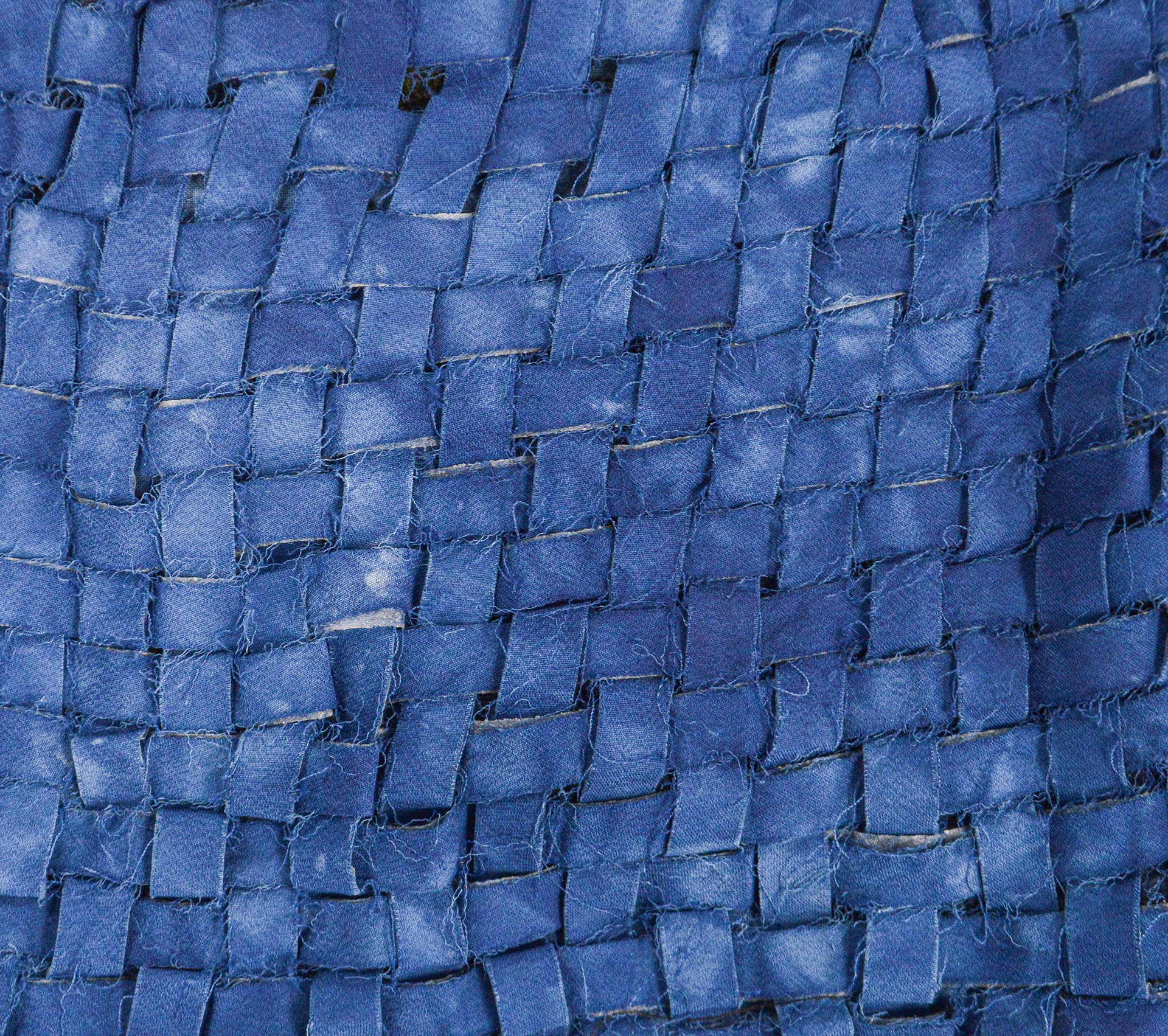
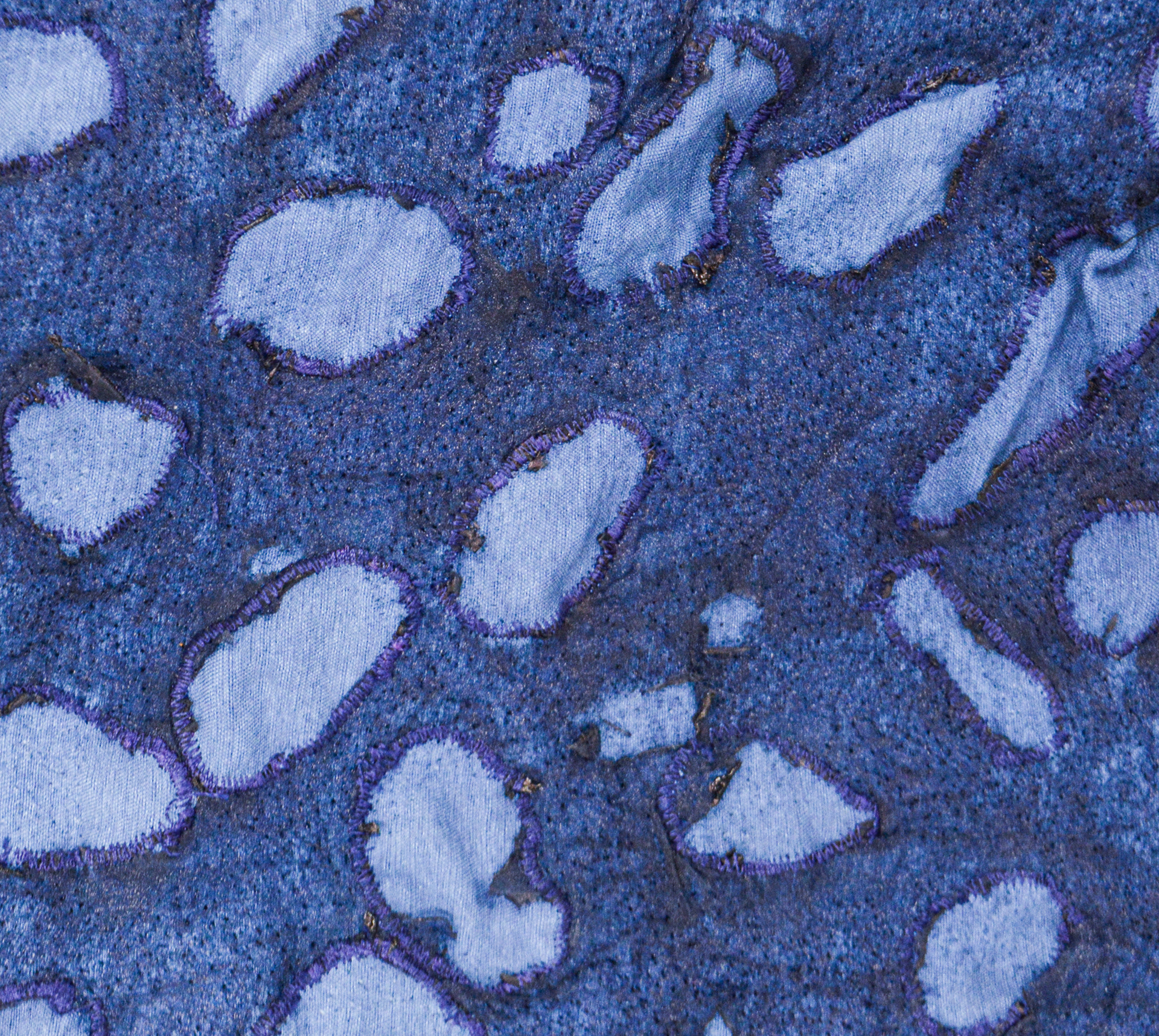
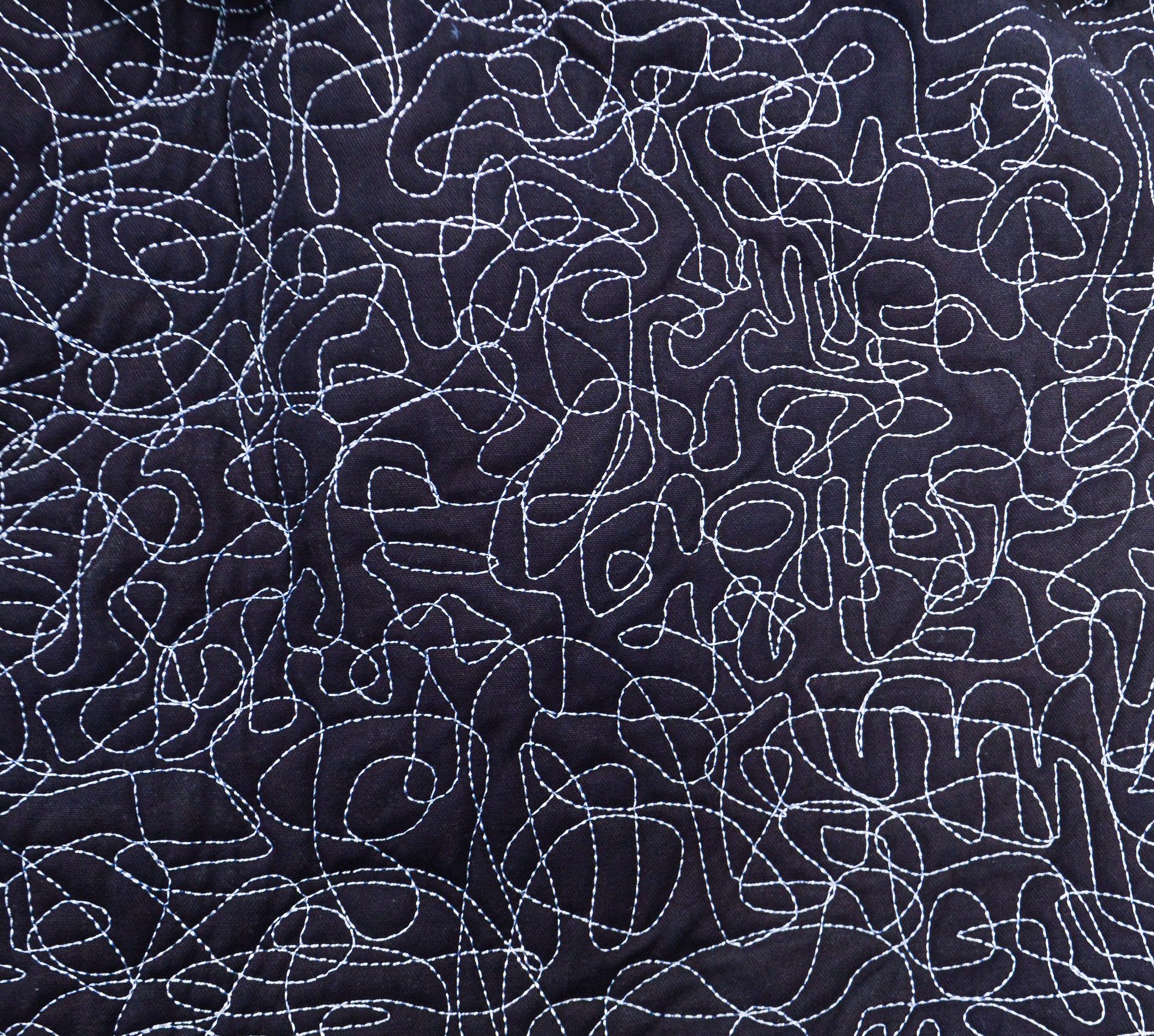
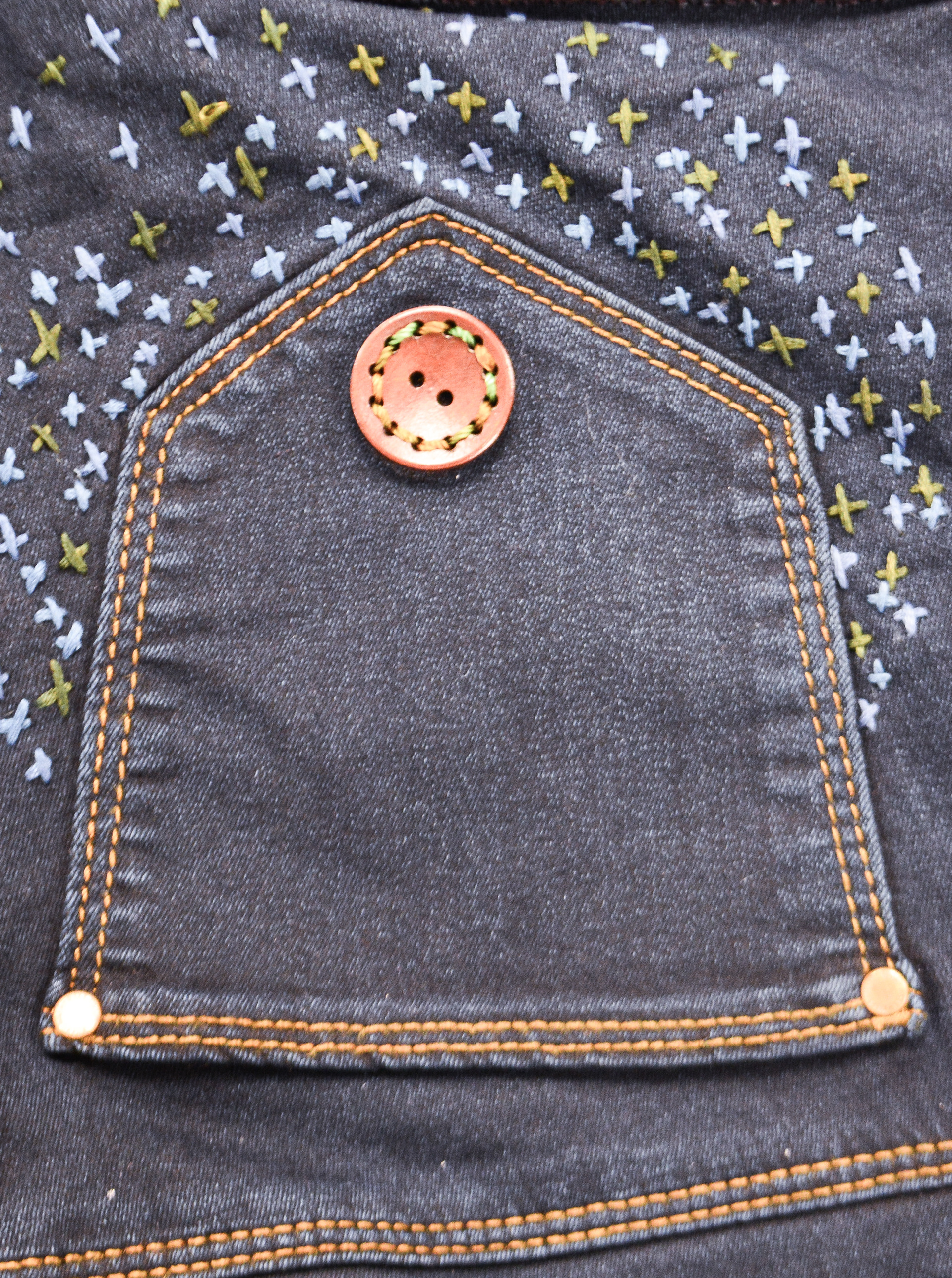
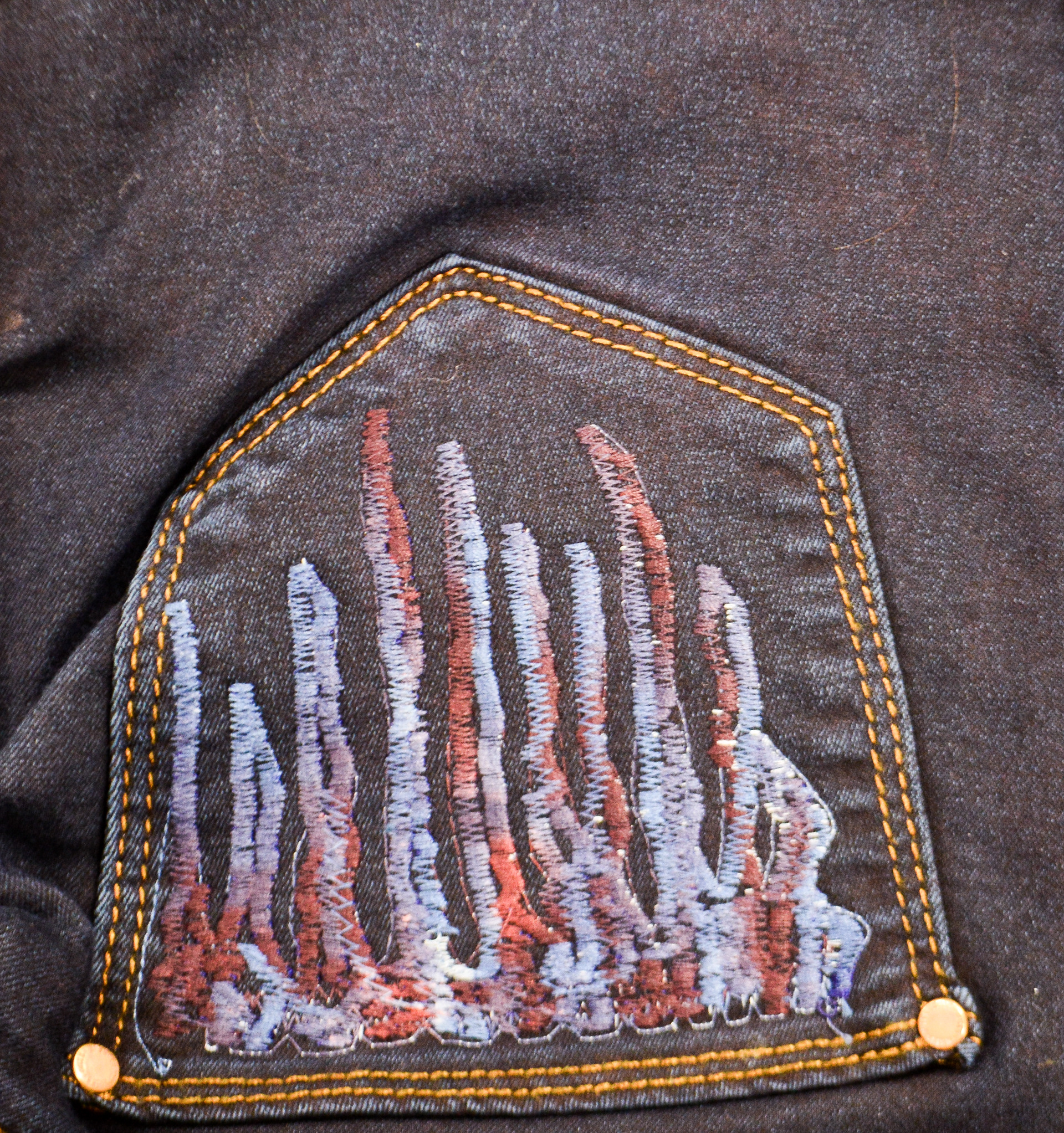
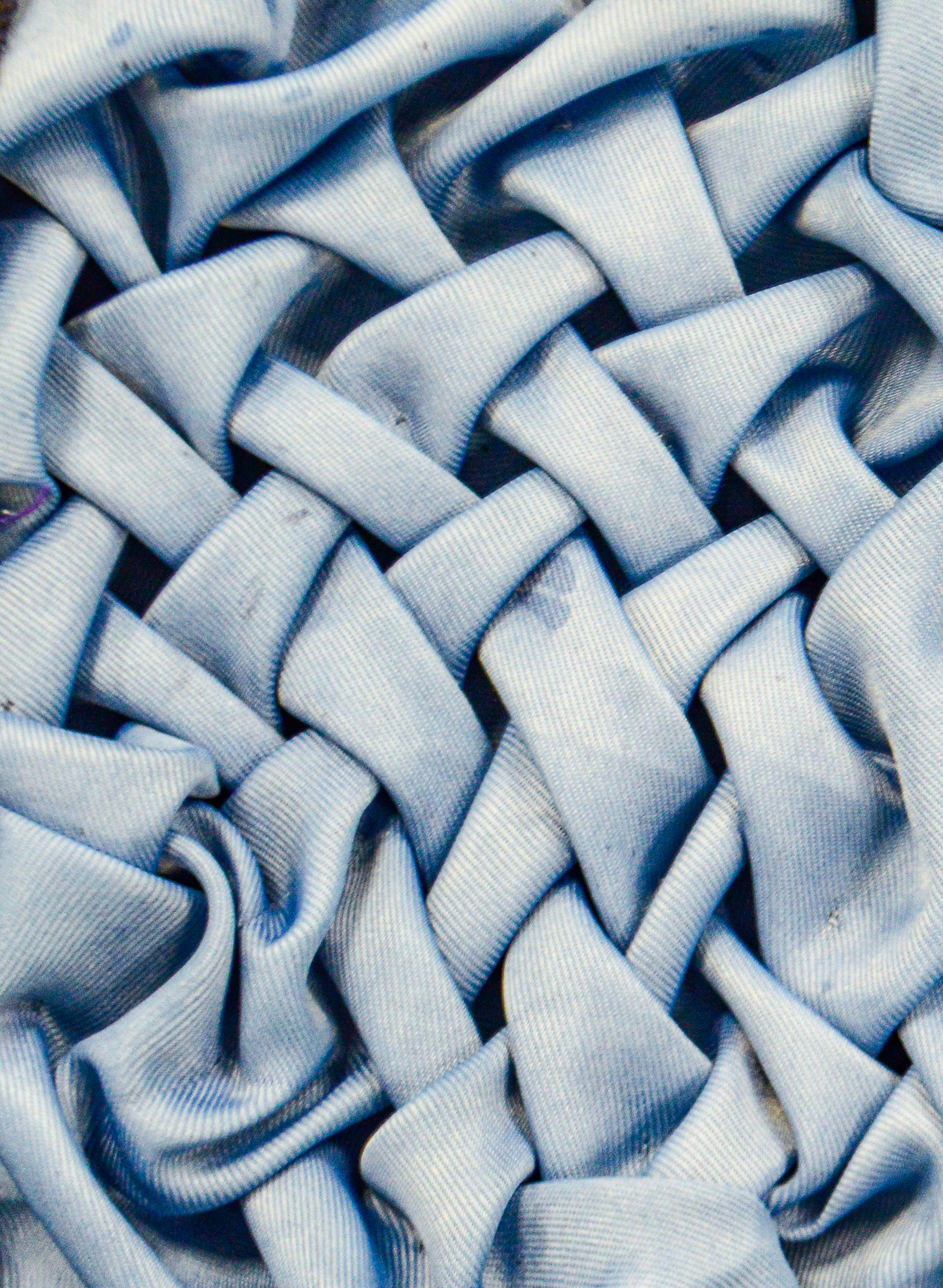
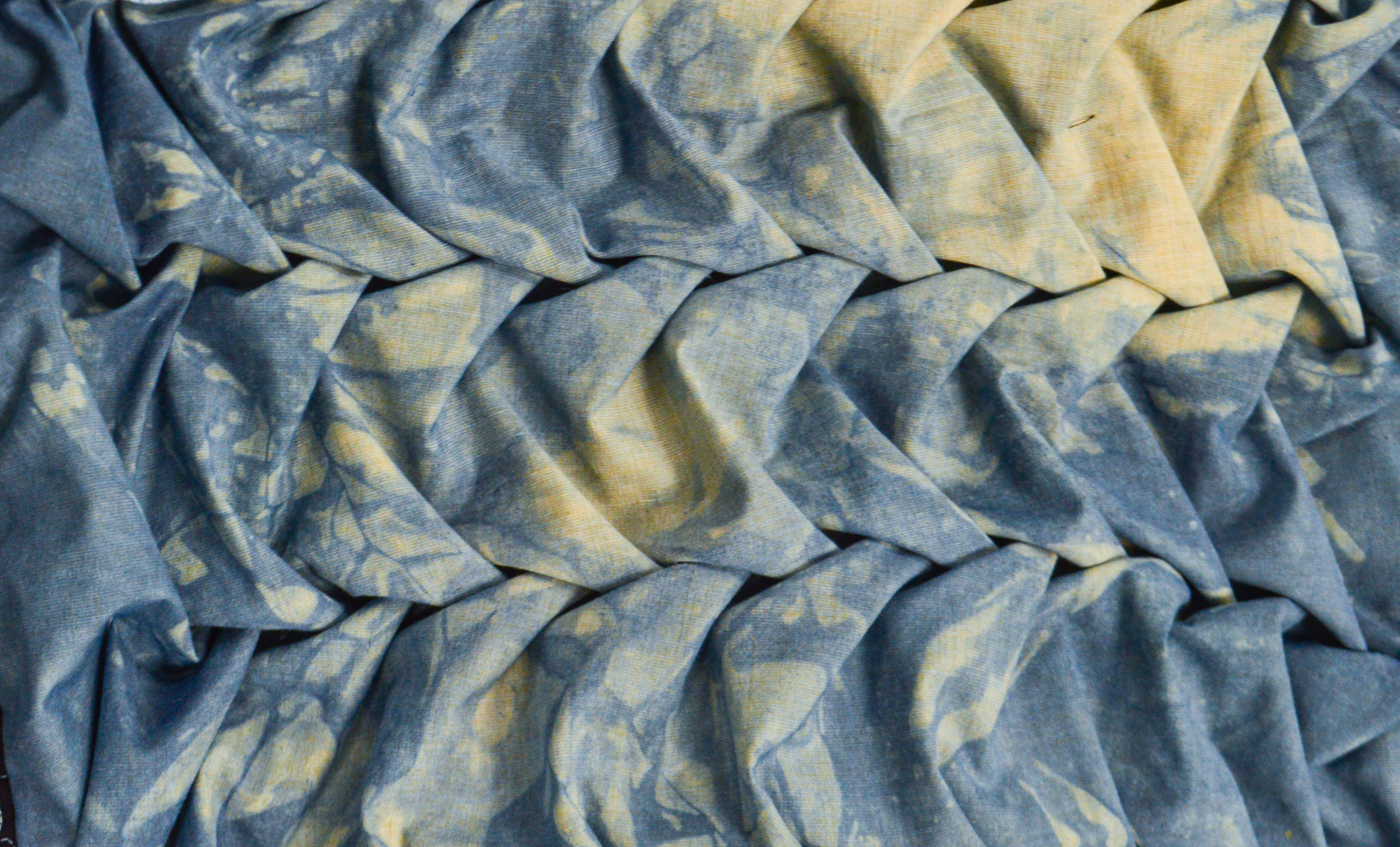

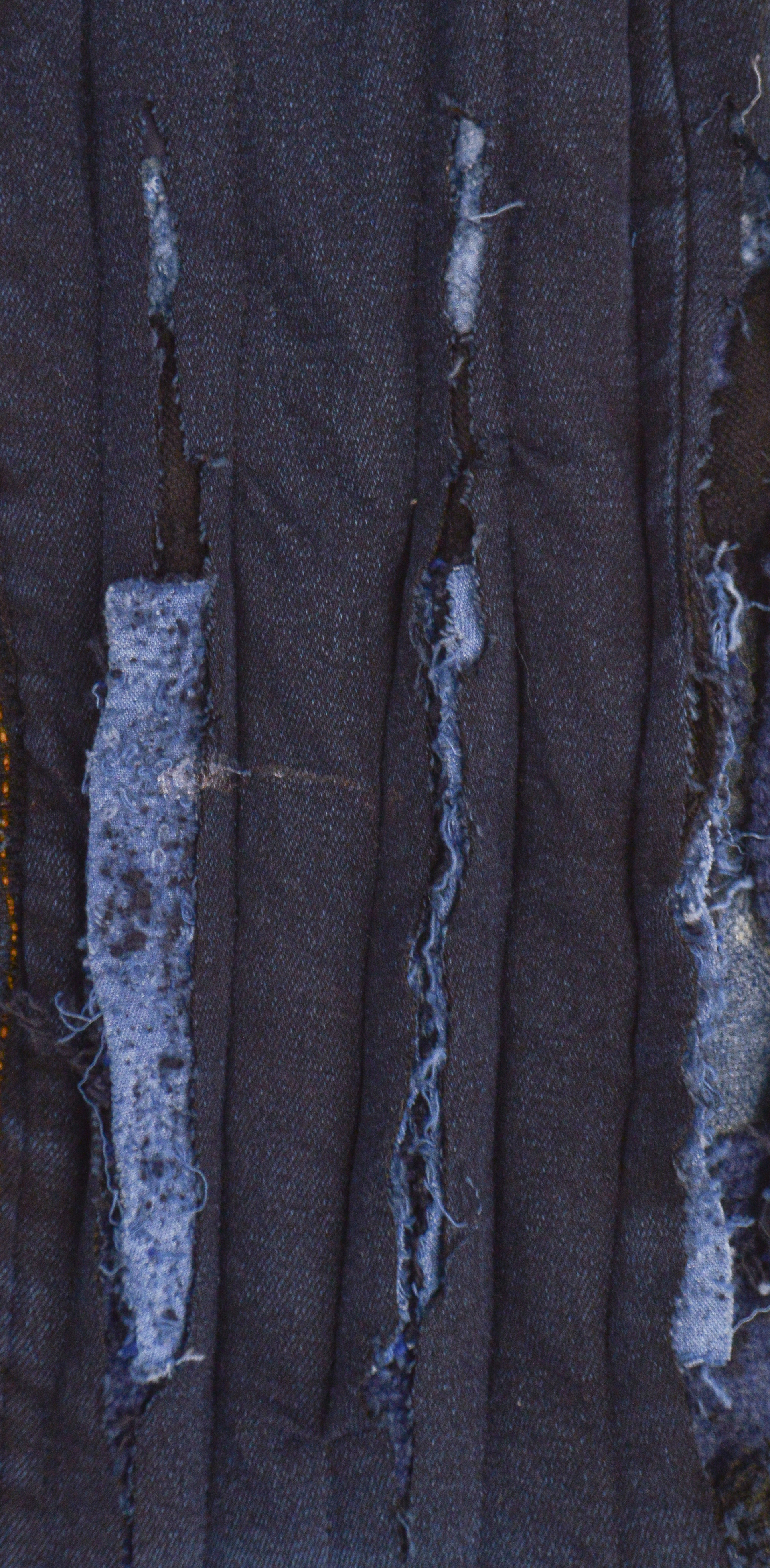
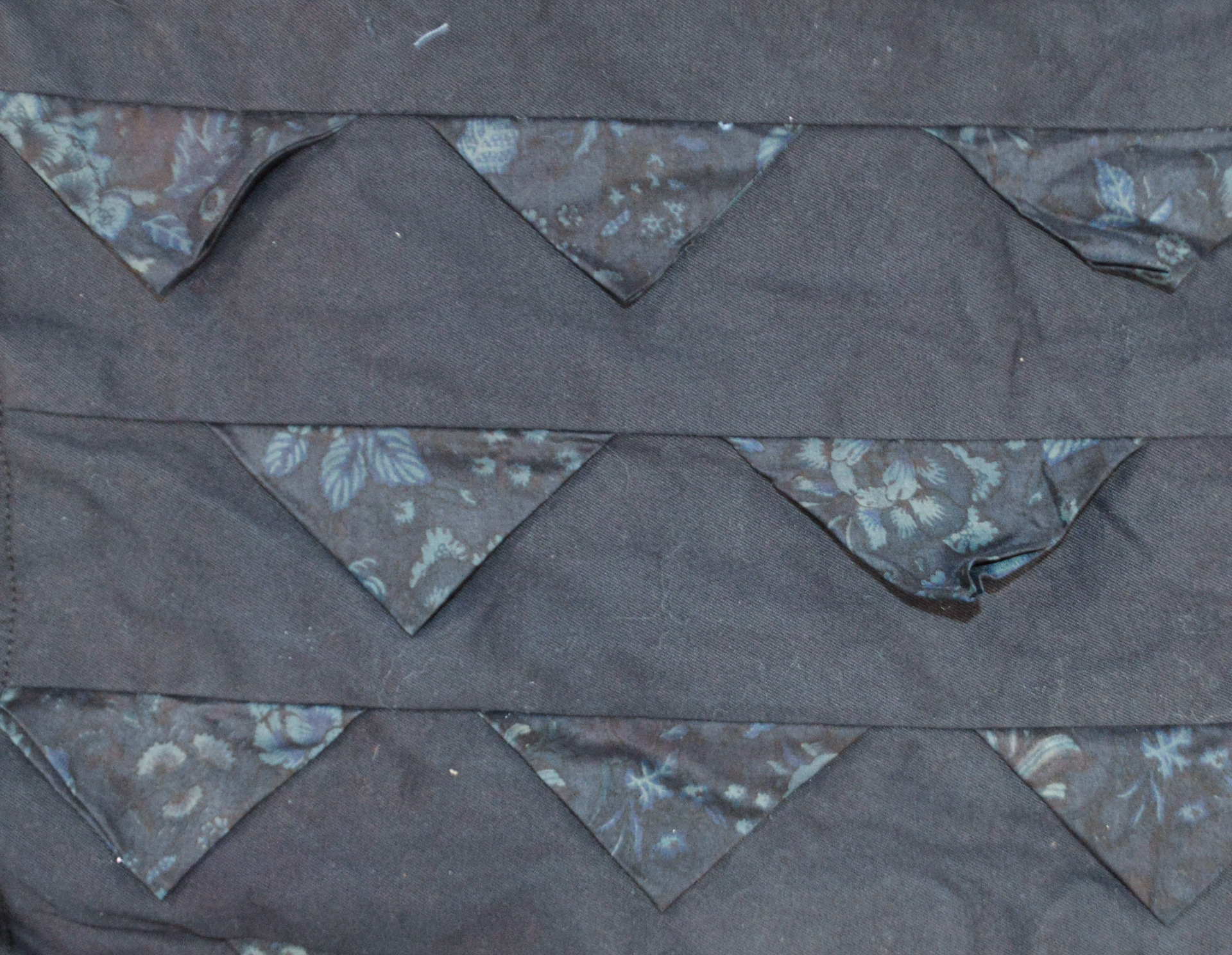

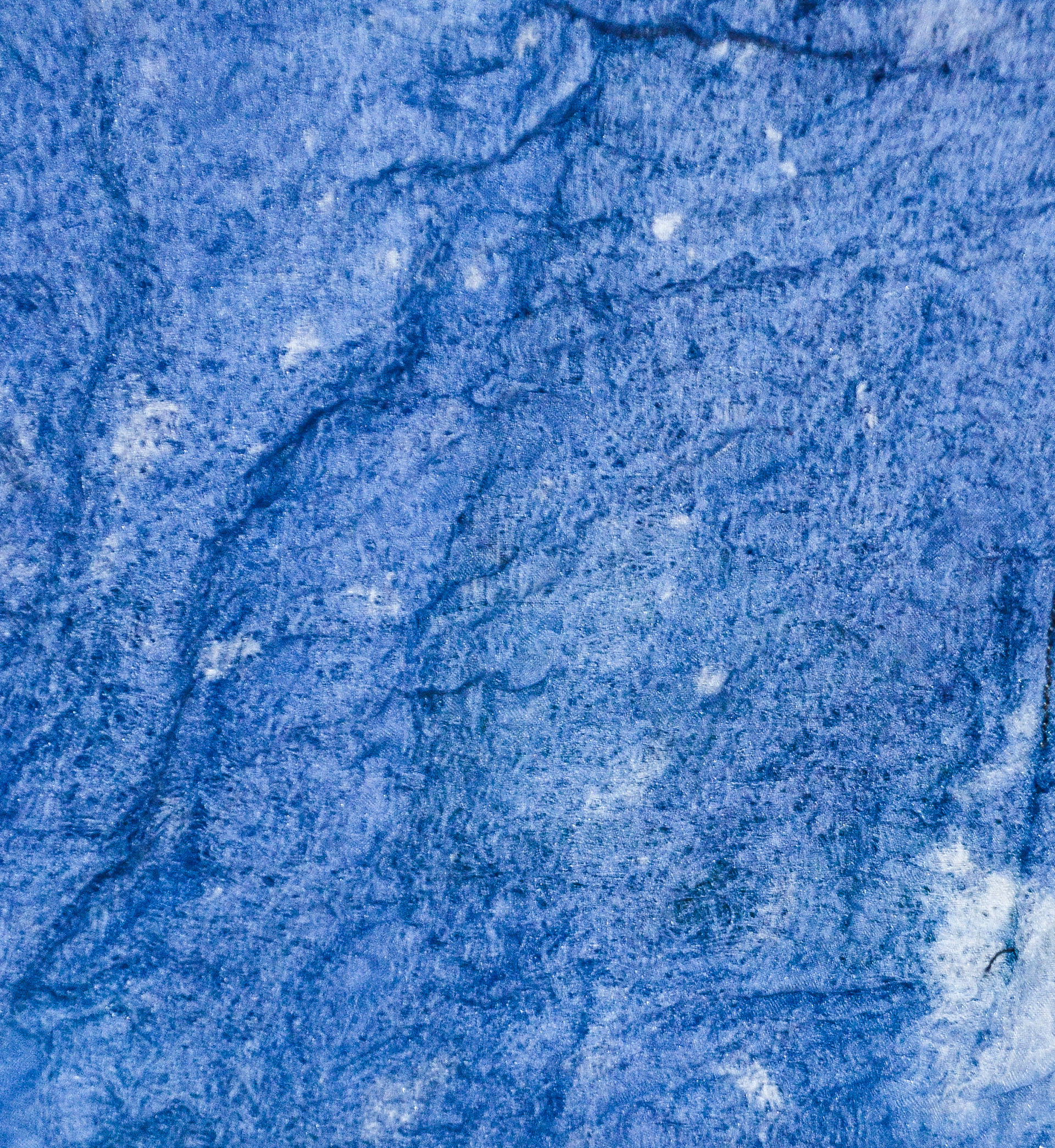
THE PROCESS OF MAKING THE FABRIC
